A 75-year pictorial history of the Cayo Santiago rhesus monkey colony
- PMID: 25764995
- PMCID: PMC4567979
- DOI: 10.1002/ajp.22381
A 75-year pictorial history of the Cayo Santiago rhesus monkey colony
Abstract
This article presents a pictorial history of the free-ranging colony of rhesus monkeys (Macaca mulatta) on Cayo Santiago, Puerto Rico, in commemoration of the 75th anniversary of its establishment by Clarence R. Carpenter in December 1938. It is based on a presentation made by the authors at the symposium, Cayo Santiago: 75 Years of Leadership in Translational Research, held at the 36th Annual Meeting of the American Society of Primatologists in San Juan, Puerto Rico, on 20 June 2013.
Keywords: Carpenter; Hansel Mieth; Macaca mulatta; Santiago Island; macaque.
© 2016 Wiley Periodicals, Inc.
Figures













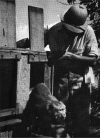
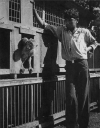


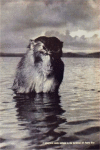






































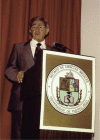
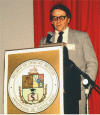










































Similar articles
-
Cayo Santiago--a scientific treasure.Am J Primatol. 2016 Jan;78(1):4-5. doi: 10.1002/ajp.22414. Epub 2015 Apr 22. Am J Primatol. 2016. PMID: 25903012
-
Proceedings of the meeting to celebrate the 50th anniversary of the Cayo Santiago rhesus monkey colony. 4-7 December 1988, Old San Juan, Puerto Rico.P R Health Sci J. 1989 Apr;8(1):1-209. P R Health Sci J. 1989. PMID: 2675160 No abstract available.
-
Primate Kinship: Contributions from Cayo Santiago.Am J Primatol. 2016 Jan;78(1):63-77. doi: 10.1002/ajp.22383. Epub 2015 Feb 20. Am J Primatol. 2016. PMID: 25704962 Review.
-
The role of Cayo Santiago in primate field studies.P R Health Sci J. 1989 Apr;8(1):47-51. P R Health Sci J. 1989. PMID: 2675170
-
What cortisol can tell us about the costs of sociality and reproduction among free-ranging rhesus macaque females on Cayo Santiago.Am J Primatol. 2016 Jan;78(1):92-105. doi: 10.1002/ajp.22368. Epub 2015 Jan 16. Am J Primatol. 2016. PMID: 25643836 Free PMC article. Review.
Cited by
-
Differential effects of early life adversity on male and female rhesus macaque lifespan.Ecol Evol. 2023 Nov 5;13(11):e10689. doi: 10.1002/ece3.10689. eCollection 2023 Nov. Ecol Evol. 2023. PMID: 37937273 Free PMC article.
-
Discovery of a secular trend in Cayo Santiago macaque reproduction.Am J Primatol. 2016 Feb;78(2):227-37. doi: 10.1002/ajp.22502. Epub 2015 Nov 5. Am J Primatol. 2016. PMID: 26540010 Free PMC article.
-
Population Genetic Structure of the Cayo Santiago Colony of Rhesus Macaques (Macaca mulatta).J Am Assoc Lab Anim Sci. 2017 Jul 1;56(4):396-401. J Am Assoc Lab Anim Sci. 2017. PMID: 28724489 Free PMC article.
-
A single-cell multi-omic atlas spanning the adult rhesus macaque brain.Sci Adv. 2023 Oct 13;9(41):eadh1914. doi: 10.1126/sciadv.adh1914. Epub 2023 Oct 12. Sci Adv. 2023. PMID: 37824616 Free PMC article.
-
Social buffering and contact transmission: network connections have beneficial and detrimental effects on Shigella infection risk among captive rhesus macaques.PeerJ. 2016 Oct 27;4:e2630. doi: 10.7717/peerj.2630. eCollection 2016. PeerJ. 2016. PMID: 27812426 Free PMC article.
References
-
- Altmann SA. A field study of the sociobiology of rhesus monkeys (Macaca mulatta). Annals of the New York Academy of Science. 1962;102:338–435. - PubMed
-
- Benitez J. Cayo Santiago: The formative years.. In: Kessler MJ, editor. Puerto Rico Health Sciences Journal; Proceedings of the meeting to celebrate the 50th anniversary of the Cayo Santiago rhesus monkey colony.1989. pp. 19–20. - PubMed
-
- Berard JD, Nürnberg P, Epplen JT, Schmidtke J. Male rank, reproductive behavior, and reproductive success in free-ranging rhesus macaques. Primates. 1993;34:481–489.
-
- Berman CM. Primate kinship: Contributions from Cayo Santiago. American Journal of Primatology. 2015;XX:XX–XX. in press, this issue. - PubMed
-
- Carpenter CR. History of the monkey colony of Cayo Santiago. Transcript of lecture given at the University of Puerto Rico Medical School; San Juan, PR: 1959.
Publication types
MeSH terms
Grants and funding
LinkOut - more resources
Full Text Sources
Other Literature Sources

